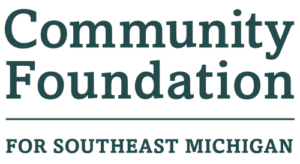The rise of 401(k)s: Three must-know tips for charitable giving

As an attorney, CPA, or financial advisor, you’ve probably seen the news that the number of 401(k) accounts with balances topping $1 million had risen by 9.5% to 544,000 as of the third quarter of 2024, up from 497,000 in the second quarter.
Notably, many of these 401(k) accounts wind up in IRA rollovers. Indeed, an estimated 10 million rollovers occurred last year with assets totaling over $1 trillion rolling into new employer-sponsored plans or IRAs, fueled in part by workers changing jobs on average every four years. What this means for your work with clients is that you’ll want to be sure to identify and keep track of all retirement accounts and evaluate the most optimal disposition for each through a client’s estate plan.
The growth of 401(k) accounts and IRAs translates to more opportunities for charitable giving among your philanthropic clients. Here’s why:
- Although a charitable bequest of any type of property can help achieve a client’s estate planning and legacy goals, retirement accounts are especially powerful. When your client names a public charity, such as a donor-advised or other fund at the community foundation, as the beneficiary of a traditional IRA or 401(k), your client achieves extremely tax-efficient results. That’s because the charity does not pay income taxes (or estate taxes) on those assets. By contrast, if the client were to name children as beneficiaries of an IRA, for example, those IRA distributions to the children are subject to income tax (and potentially estate tax), and that tax can be hefty given the tax treatment of inherited IRAs.
- If your client is deciding how to dispose of stock and an IRA in an estate plan and intends to leave one to children and the other to charity, leaving the IRA to charity and the stock to children is a no-brainer. Remember, the client’s stock owned outside of an IRA gets the “step-up in basis” when the client dies, which means that the children won’t pay capital gains taxes on the pre-death appreciation of that asset when they sell it.
- Furthermore, clients who are 70 ½ or older can make tax-efficient gifts directly from an IRA to a qualified charity, up to $108,000 in 2025. This is known as a “Qualified Charitable Distribution.” (Please remember that while a QCD is a great way to support an endowed fund or special initiative at the community foundation, a QCD can not be directed to a donor advised fund (DAF)).
The community foundation is always happy to work with you to ensure that your clients are maximizing their assets to fulfill their charitable giving goals, both during their lives and through legacy gifts. We look forward to the conversation!
